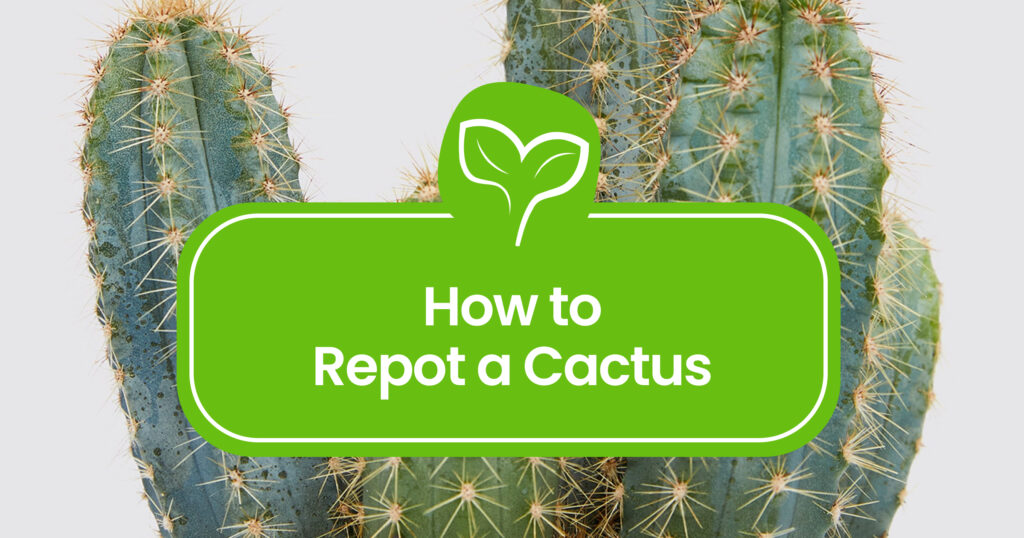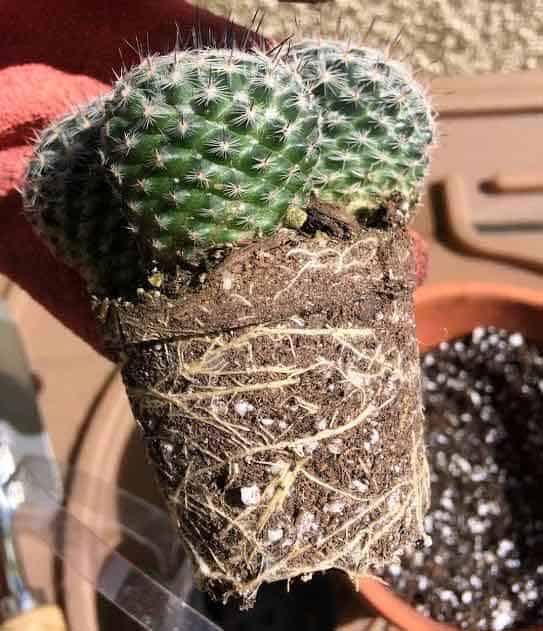
Cacti are very popular house plants, as they don’t need much attention. Nevertheless, you need to learn how to replant a cactus. Despite the fact that they grow slowly and are happy with little attention, there comes a time when they outgrow the existing pot and need to be transplanted into a larger one.
Cactus replanting plays an important role in the health and growth of the plant. Providing enough space for the plant to grow is essential to its happiness. Fail to replant in time, and your cactus needs to face serious consequences. But remember, when it is blooming time, you should not get started with the repotting just yet!
In this article, our gardeners guide you on how to replant cacti, what to look out for when replanting, what soil mix to use, how to remove them from the old pot, or how much water to add after replanting.
Why do you need to repot your cactus?
Nutrient uptake plays a major role in the development of cacti and this requires healthy roots. These roots are constantly growing into larger ones. The pot in which the plant is placed is fixed in size and as the roots are growing, they reach a point where they can no longer do so.
Now that is when you need to transplant the cacti into a larger pot. This process creates a more comfortable space for the plant, which promotes proper root growth. Not least, when replanting, the soil mix is also refreshed, which is important for nutrients. Generally, you can plant 3-4 cacti in a standard-size pot.

When to repot your cactus?
These plants should be replanted when they have outgrown the existing pot. How do we know when to replant cacti? Generally, they should be replanted every 3-4 years anyways. This depends on a number of things, such as the type of cactus, how fast it grows, how much nutrients it takes up, or the size of the pot it was in when it was first planted.
To know when to replant, examine the roots. If the roots are no longer growing naturally, for example, they have outgrown their watering hole. Also, if your plant is no longer able to stand stably. In this case, the cactus has grown to such a size that it needs larger roots, otherwise it cannot grow properly.
What tools do you need to repot a cactus?
You are going to need the following tools to do the repotting:
- Towel: The cactus protects itself from sunlight with spines. These thorns can be dangerous if you touch them without wearing a protective device. You can replace the towel with sturdy gloves, kitchen tweezers or even several layers of paper, such as newspaper.
- Special soil mix for cactus: The cactus mix can be prepared in advance at home or ordered.
- Perlite: Decorations, such as perlite, can be added to the top of the soil mix to keep the aesthetics in place, but it can also be neglected.
- New, bigger pot: The new tile should be at least one and a half times the size of the existing one. Choose a pot that has drainage holes.

What should I add to the soil mix?
If you decide not to buy ready-made potting soil and make your own, you need to mix up quality soil and good drainage materials:
- potting soil
- perlite or pumice
- granite sand
Prepare the cactus for repotting
Preparing the cactus for replanting makes it easier to do so later.
- Prepare the new soil mix.
- If you are doing it at home, you need to do the mixing on your own. Mix the soil, the perlite and the granite sand together.
How to repot a cactus?
After the preparation, comes the replanting itself. Clean the roots and handle the plant with care. Make sure the cactus is not too deep in the new pot. Acclimatization takes about 1 week. Follow these simple steps:
- Remove the cactus from its pot: Remove the cactus safely from the existing pot using a towel. The towel will protect your hands from the cactus spines. Be careful not to damage the cactus, because you can’t quite feel the thorns on the towel. You can also use gloves.
- Clean the roots: Use a thin wooden stick to guide the roots out of the root ball. This is an important step so that the new roots can grow in the right direction.
- Place the plant in the new pot: Try to center the plant. Use a towel to hold the cactus steadily until it is stable. It’s important not to plant it deeper than it was in the potting pot, as the whole cactus could rot.
- Fill the pots with the soil mixer: Fill the pot completely, leaving only a small area for decorative elements. To make sure you put enough soil mix in the pot, use a thick wooden stick to push in the fresh soil to avoid having to push it in with your bare hands.
What should you do after repotting?
Cacti are pretty tough, but replanting can be stressful for any plant. Be careful not to overwater it, causing root rot. Wait for the soil to dry out completely and only then water it. Cacti like the sun, so ensure that they have constant sunlight and warmth. If you live in a colder, sunless area, use artificial light.
How do you know if the repotting was successful?
The signs of successful replanting are pretty obvious: the plant is not rotting, nothing is appearing on it and it is growing steadily.
What should you avoid after replanting?
The most common activity to avoid is overwatering and fertilizing. The cactus is a succulent that is designed to hold water for a long time and only needs to be watered occasionally. The problem most often encountered by new gardeners is watering immediately after replanting. It should not be done immediately, only when the soil is completely dry. If you see that the cactus is bending, try planting it deeper and adding more soil. Push down with force to make it stable.

